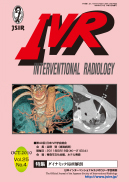25 巻, 4 号
選択された号の論文の10件中1~10を表示しています
- |<
- <
- 1
- >
- >|
特集
-
2010 年25 巻4 号 p. 421-426
発行日: 2010年
公開日: 2011/10/25
PDF形式でダウンロード (908K) -
2010 年25 巻4 号 p. 427-434
発行日: 2010年
公開日: 2011/10/25
PDF形式でダウンロード (1579K) -
2010 年25 巻4 号 p. 435-443
発行日: 2010年
公開日: 2011/10/25
PDF形式でダウンロード (1387K) -
2010 年25 巻4 号 p. 444-449
発行日: 2010年
公開日: 2011/10/25
PDF形式でダウンロード (880K) -
2010 年25 巻4 号 p. 450-456
発行日: 2010年
公開日: 2011/10/25
PDF形式でダウンロード (1708K) -
2010 年25 巻4 号 p. 457-463
発行日: 2010年
公開日: 2011/10/25
PDF形式でダウンロード (1042K)
原著論文
-
2010 年25 巻4 号 p. 464-469
発行日: 2010年
公開日: 2011/10/25
PDF形式でダウンロード (504K) -
2010 年25 巻4 号 p. 470-475
発行日: 2010年
公開日: 2011/10/25
PDF形式でダウンロード (521K) -
2010 年25 巻4 号 p. 476-482
発行日: 2010年
公開日: 2011/10/25
PDF形式でダウンロード (724K)
症例報告
-
2010 年25 巻4 号 p. 483-486
発行日: 2010年
公開日: 2011/10/25
PDF形式でダウンロード (574K)
- |<
- <
- 1
- >
- >|
